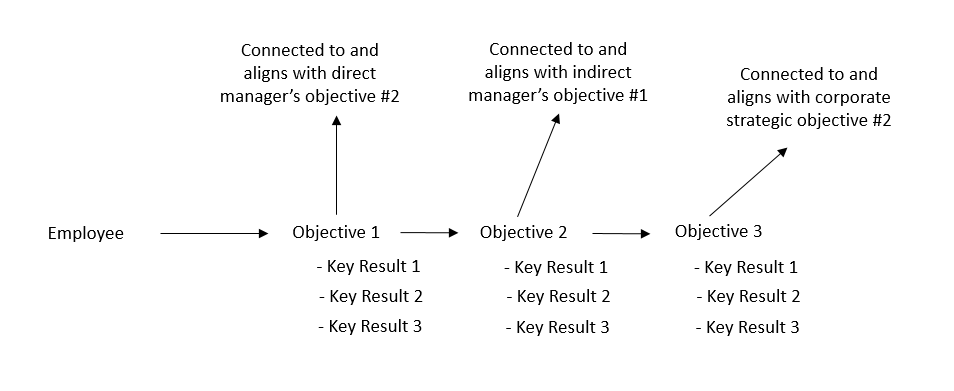What are OKRs
OKRs (objectives and key results) is a framework to add clarity between what is important to the employee, department, and company. It connects employee objectives and priorities to the overall corporate strategy.
Objectives = What you want to achieve (should be qualitative and aspirational)
Key Results = How you will achieve the objective (should be quantitative and measurable)
How companies can benefit from using OKRs
- Aligns individual and team objectives with core corporate objectives
- Ensures everyone is aware what priorities are important to the company, what is important to them, and what they are doing to help move the company forward
- Increases communication and objective clarity through transparency
- Gives management a real-time team progress snapshot, removing time consuming meetings just to get caught up on everyone’s progress
- Encourages collaboration between colleagues and departments, breaking down corporate silos
Where OKRs began
It started with Andy Grove at Intel. John Doerr learned the philosophy from Andy and introduced the idea to a very young Google when it had roughly 40 employees. Google has been perfecting the process ever since and it is a fundamental aspect to Google’s success.
“Google uses OKR as a tool to empower people. People think it’s about accountability, and it does achieve that as a byproduct. But, it’s really a way to build a social contract in your organization.”
John Doerr
A few key rules when implementing OKRs
- Objectives should align with corporate strategic objectives (directly or indirectly)
- 3-5 objectives, 3-4 key results per objective. Too many objectives dilute your focus
- Set objectives quarterly
- Objectives should be ambitious. Employees who stretch their goals achieve more in the end. You achieve more in completing 70% of a stretch goal compared to completing 100% of an objective that is set at a low bar and is safe
- Key results are graded at the end of each period to see what you achieved. This is to be used as a conversation between employee and manager
- Objective grades should not be used when determining compensation. Connecting OKRs to bonuses or salary increases can cause sandbagging (employees striving for bare minimum achievement)
- Keep your key result data up to date so your manager and colleagues can review your progress and be informed with current information
What an OKR structure looks like
OKRs start with defining the corporate core strategic objectives. Senior leaders then create their own objectives and key results, aligning their objectives to the core strategic objectives.
Next, senior leaders communicate to their managers the direction the company is going, shares what their own OKRs look like, then invites them to plan how they will help the company achieve these strategic goals. Once the managers have created their OKRs, the same process occurs where the managers now communicate the information to their employees and invite them to complete the same process.
Although the initial direction is a top-down approach where top leadership is defining the company’s strategy, it is important to foster a bottom-up approach in allowing staff to come up with their own objectives in how to contribute to the company’s overall success. You tend to get better achievement results in giving some autonomy versus management telling employees what their objectives are. If possible, involve employees in the decision-making process
The graphic below shows what one employee’s OKR framework could look like. For each objective, they are defined by a few measurable key results and are linked or aligned to management’s or the corporate objectives. Employees can then see how their work is directly contributing to the company’s success.
 Typical OKR timeline breakdown
Typical OKR timeline breakdown
The graphic below shows what actions occur when OKRs are set each quarter:
- Discuss objectives with manager 2 weeks before quarter begins
- Lock down objectives and key results by the end of week 2 of each quarter
- Update key result progress and add comments regularly to keep manager and cohorts informed with up to date information
- Complete a final grade of your key results when the quarter ends, meet with manager to discuss the results
- Manager and employee meet periodically throughout the quarter to discuss progress
 How Goal Management can help
How Goal Management can help
Goal Management lets you create, manage, align, and share your objectives in an easy to follow platform. It allows you to collaborate with the entire company in an effort to inform, be informed, and work together in moving the company forward by achieving the corporate strategic objectives as a team.
If your company is already using the OKR methodology, but want more advanced software to track and manage overall progress, set up a meeting to talk to our Customer Success Team here.



